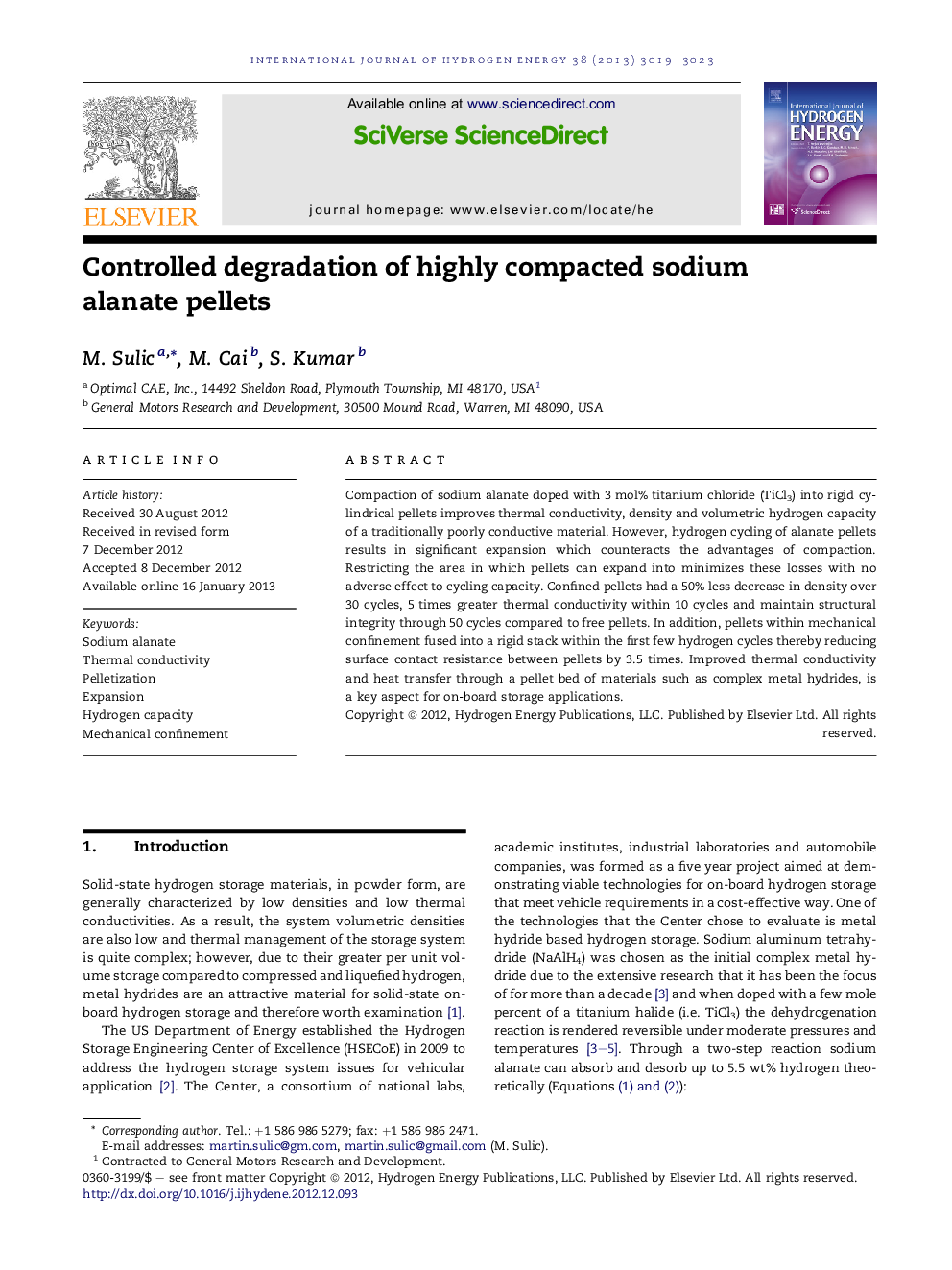| Article ID | Journal | Published Year | Pages | File Type |
|---|---|---|---|---|
| 1281968 | International Journal of Hydrogen Energy | 2013 | 5 Pages |
Compaction of sodium alanate doped with 3 mol% titanium chloride (TiCl3) into rigid cylindrical pellets improves thermal conductivity, density and volumetric hydrogen capacity of a traditionally poorly conductive material. However, hydrogen cycling of alanate pellets results in significant expansion which counteracts the advantages of compaction. Restricting the area in which pellets can expand into minimizes these losses with no adverse effect to cycling capacity. Confined pellets had a 50% less decrease in density over 30 cycles, 5 times greater thermal conductivity within 10 cycles and maintain structural integrity through 50 cycles compared to free pellets. In addition, pellets within mechanical confinement fused into a rigid stack within the first few hydrogen cycles thereby reducing surface contact resistance between pellets by 3.5 times. Improved thermal conductivity and heat transfer through a pellet bed of materials such as complex metal hydrides, is a key aspect for on-board storage applications.
► Thermal conductivity degradation reduced through mechanical confinement. ► Confined pellets fuse together resulting in reduced surface contact resistance. ► Confinement leads to slight reduction in hydrogen capacity compared to unconfined. ► Pellets integrity holds through 50 cycles. ► Pellet thermal conductivity 5 times greater than unconfined after 10 cycles.
